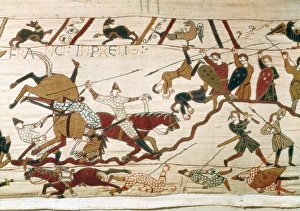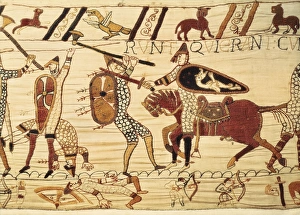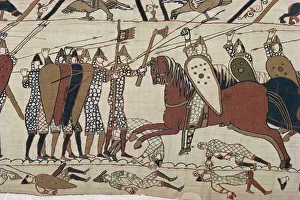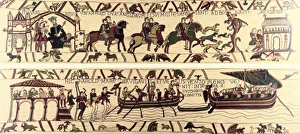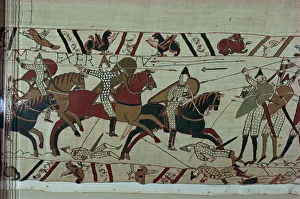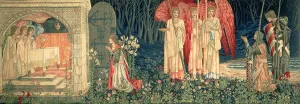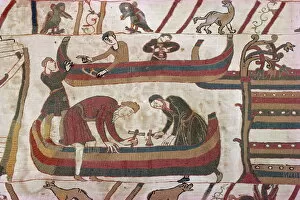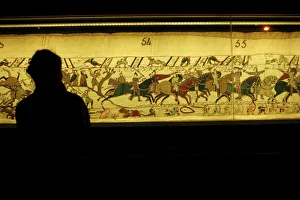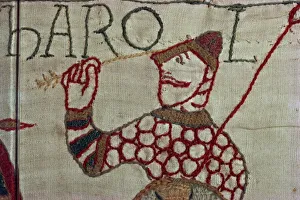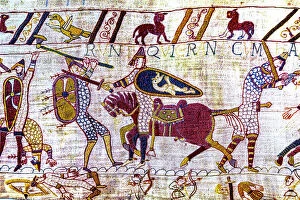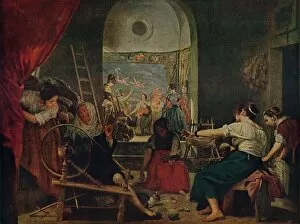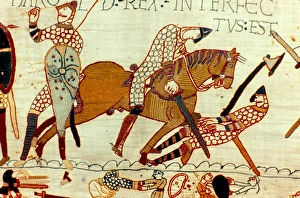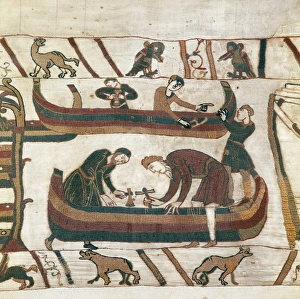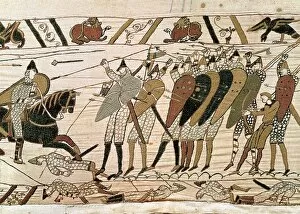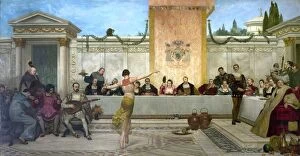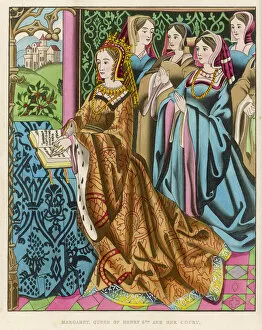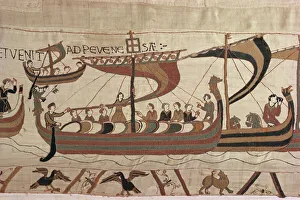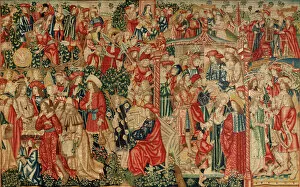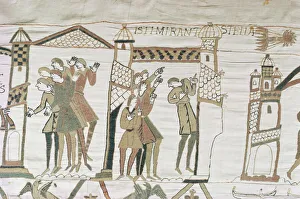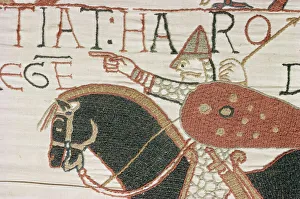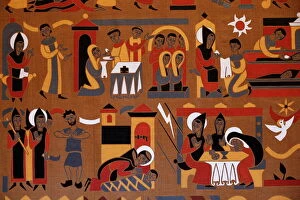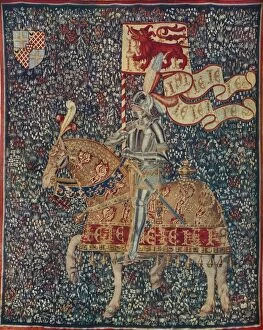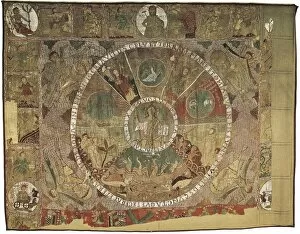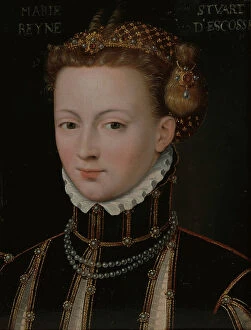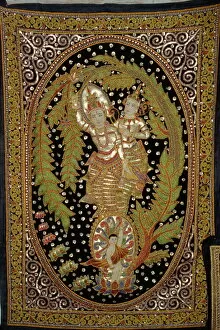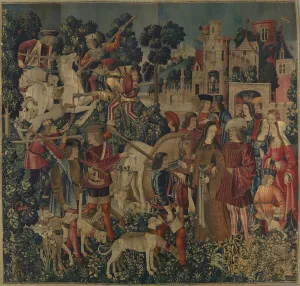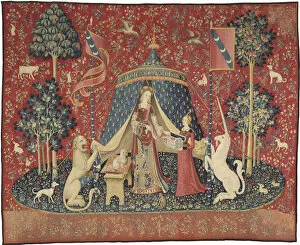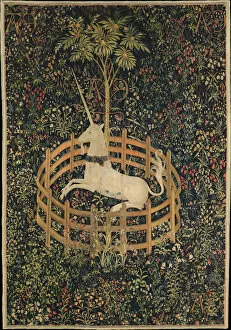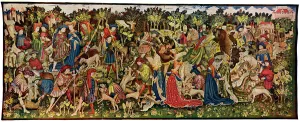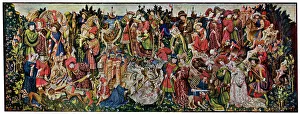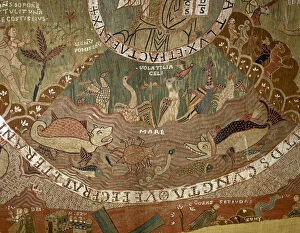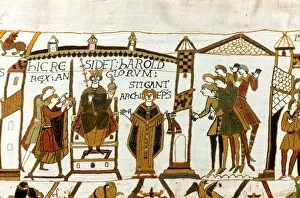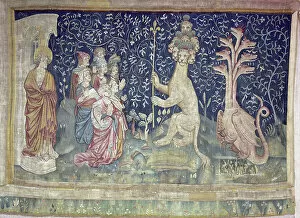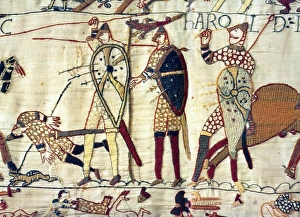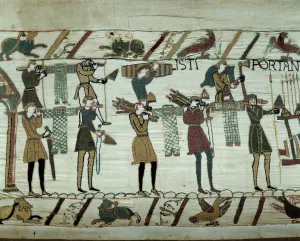Tapestry Collection
The Bayeux Tapestry, created between 1066 and 1077, is a remarkable piece of art that tells the story of the Battle of Hastings
All Professionally Made to Order for Quick Shipping
The Bayeux Tapestry, created between 1066 and 1077, is a remarkable piece of art that tells the story of the Battle of Hastings. This historical masterpiece depicts various scenes from this significant event in European history. One section of the tapestry showcases King Harold's foot soldiers armed with spears and battle axes, ready to defend their land against the Norman invasion. Their determination and bravery are vividly captured in every stitch. Another scene portrays The Attainment; The Vision of the Holy Grail to Sir Galahad, Sir Bors, and Sir Percival. This mystical moment adds an element of enchantment to the tapestry, showcasing a different aspect of medieval life. Tragically, there is also a depiction of King Harold's death on the tapestry. It shows him being struck by an arrow in his eye during battle—a haunting image that symbolizes the end of an era for England. In addition to these pivotal moments in history, there are other sections that showcase daily life during that time period. One such scene displays craftsmen building ships as they prepare for war—an essential part of naval warfare at that time. The Norman cavalry clashing with Harold's foot soldiers forming a shield wall is another captivating moment depicted on this magnificent tapestry. It captures both the chaos and intensity experienced during battles fought on horseback versus those fought on foot. While not directly related to the Bayeux Tapestry itself but still worth mentioning when discussing tapestries is Diego Velasquez's "Las Hilanderas" (The Spinners) from 1657 (c1934). This artwork demonstrates how tapestries have been used throughout history as decorative pieces or storytelling mediums beyond just depicting historical events like those found in Bayeux Tapestry.


